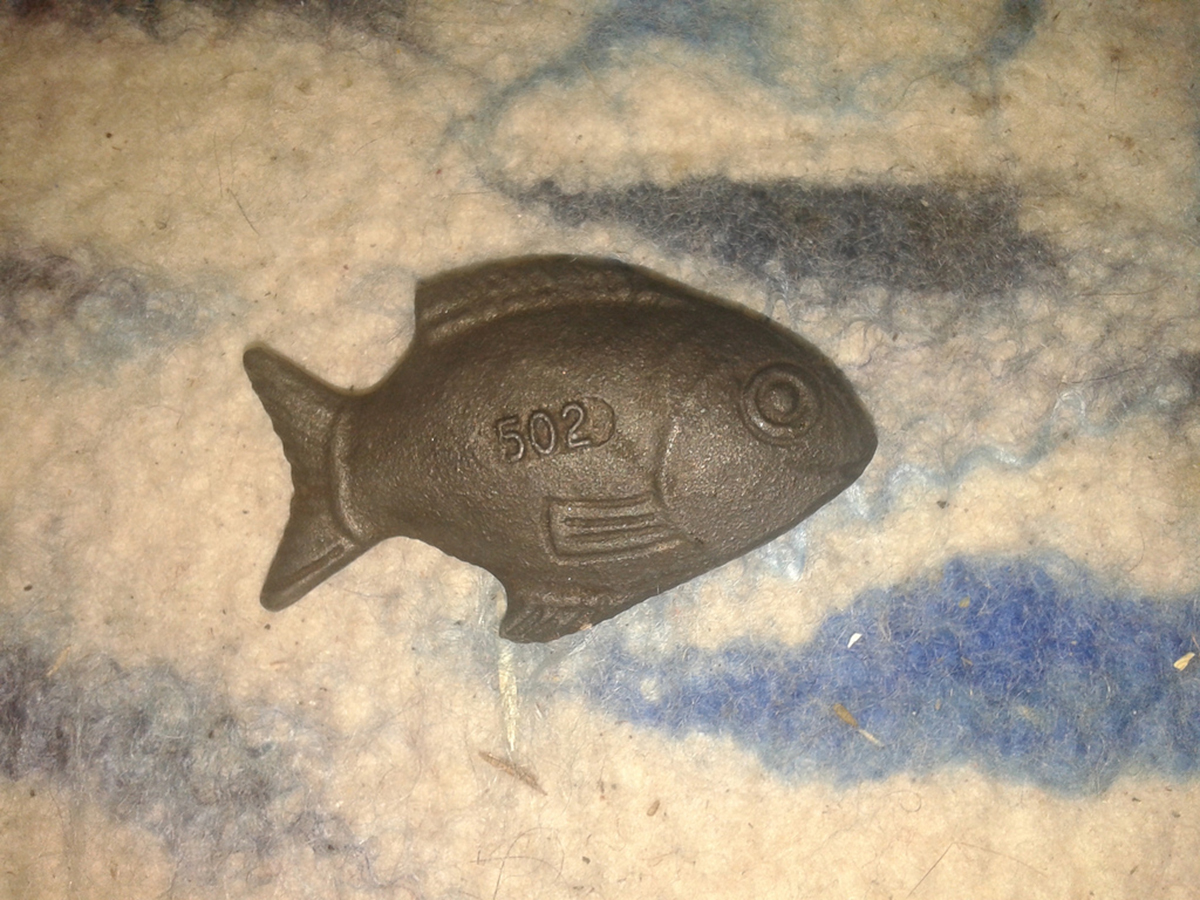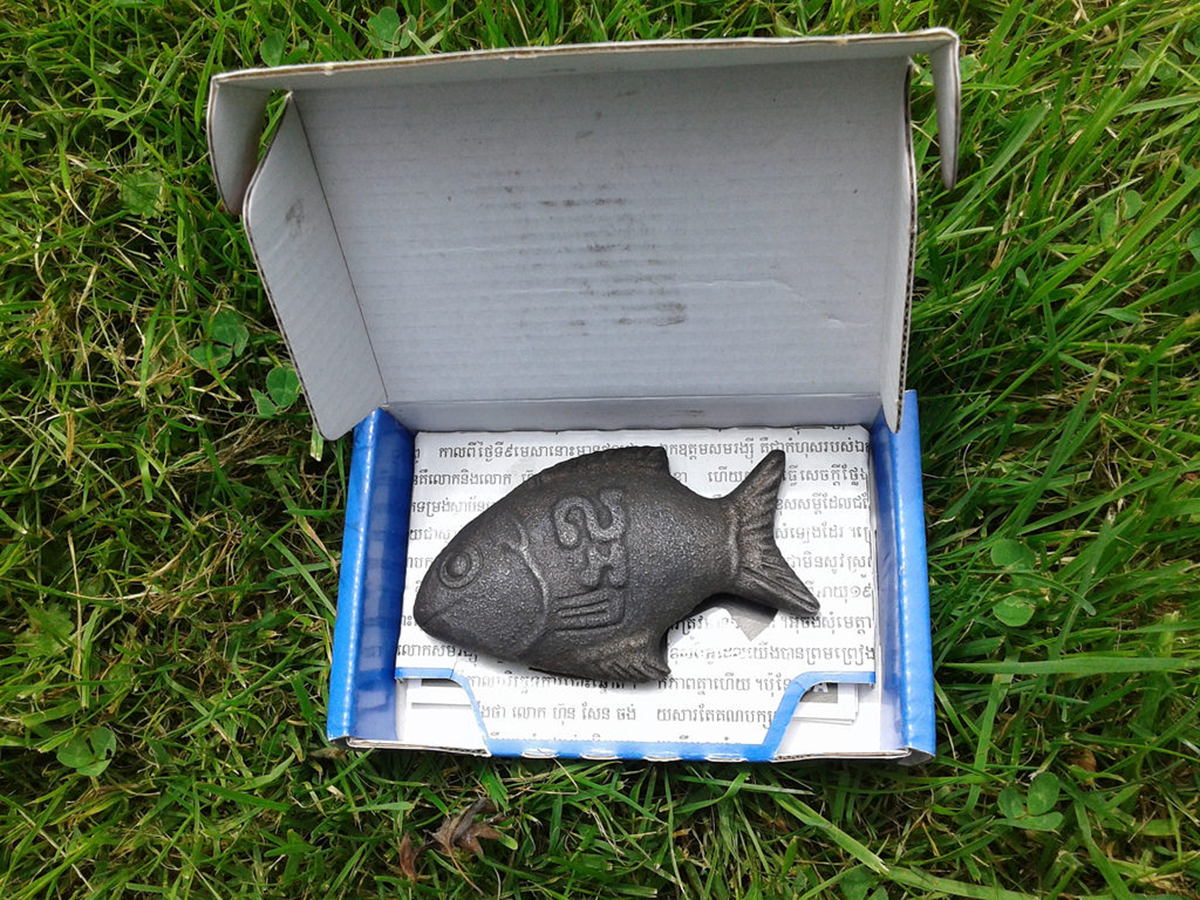Once in a while, someone comes up with a genius and simple solution to a really big problem, and we've just got to share. You may have heard about the lucky iron fish, the coolest "iron supplement" out there. The lucky iron fish is really helping people in one of the poorest countries in the world, but there's no reason you can't use it too.

What Is Iron-Deficiency Anemia, And Why Does It Matter?
Iron-deficiency anemia is a condition in which a lack of iron leads to an inadequate amount of healthy red blood cells in the body. Red blood cells are responsible for transporting oxygen to the body, making them rather crucial. While mild iron-deficiency anemia may go unnoticed because it doesn't produce any symptoms, people who have it will start to notice tell-tale signs as the condition worsens. Typical symptoms include fatigue, pale skin, a feeling of general weakness, tingling in the extremities, and shortness of breath. Sufferers may also notice cold hands and feet, brittle nails, headache, chest pain and frequent infections. All of these symptoms point to the fact that your body is functioning sub-optimally when you don't get enough iron.
Though iron-deficiency anemia is more common in developing countries, it's also the only nutritional deficiency that's widespread in developed nations. While iron-deficiency anemia is much more of a stealth health problem than, let's say, epidemic diseases, its consequences can be devastating: think deaths, maternal hemmorhages during childbirth, and a reduced productivity at work and at school.
We don't need fancy vaccines or medicinal cures before we can solve the worldwide problem of iron-deficiency anemia — the causes are already well-known, and the solutions right along with them. Infections exacerbate the problem of iron-deficiency anemia, and that's why the World Health Organization lists "immunization and control programs for malaria, hookworm and schistosomiasis" as one of the key solutions. The other two are an increased intake of iron, and a balanced and nutritious diet in general.
Simple, right?
What's The Lucky Iron Fish?
Cambodia, one of the poorest countries in the world, is especially affected by iron-deficiency anemia. The problem is so big that over 60 percent of all Cambodia's women are dangerously low on iron, as well as 44 percent of the general population. Because of this, the country struggles with enormous rates of premature labor, hemorrhage in childbirth, and brain development problems.
READ Starving Infections Of Iron To Beat Back Disease
University of Guelph student Christopher Charles set out to change that. He knew that cast-iron cookware gives off iron that leads to lower levels of anemia, but he was also aware that iron-rich foods including red meat and legumes are hard to come by in Cambodia, where most of the rural population earns less than $1 a day. Iron supplements did not appear to be a long-term solution in this situation either. Having that in mind, Charles created cast-iron discs, which he asked villagers to put in their pans while making soup or boiling water.
Enter the lucky iron fish.
The Lucky Iron Fish: A Simple Solution To A Very Complex Problem?
Charles, who received a grant from the Canadian International Development Program to look into the issue, wasn't about to give up when it turned out women simply didn't want to use the iron discs provided. He decided to remarket the disc, shaping it as a lotus flower instead. That didn't work either, but he and his team did find out that a certain fish species was a symbol of good luck in Cambodia. Once the iron discs were shaped like these fish, the reluctance largely went away and people started using them — with good results. Later research found that those who used the lucky iron fish in their cooking regularly had much better blood iron levels, and the rate of iron-deficiency anemia went down by 43 percent among individuals who used the fish.

My Experience
I encountered an article on the BBC that mentioned the invention. With sparked curiosity, I set out to find out more about the fish and found out that it was for sale online. You may well have heard about the lucky iron fish already, given the amount of social media coverage it received, but you probably think of it as something that helps people in developing countries.
Being a vegetarian myself, the lucky iron fish really appealed to me. Past blood tests showed that I was deficient, and I figured that using the lucky iron fish would be a simpler and cheaper option than constantly purchasing supplements, which can also cause side effects. Besides, that lucky iron fish really looked awesome. I wanted it.
I took the plunge and bought one. If you buy a lucky iron fish (expensive at $25 plus packaging and shipping!), you also gift one to a Camodian family, so you are helping someone else as well as yourself. After waiting waiting for it for what seemed like an eternity, the fish finally showed up. It had to come all the way from Cambodia after all.
The charming fish is really quite a heavy cooking accessory that just about fits into the palm of your hand. When you use it, you need to add some lemon juice to your cooking to promote the absoption of iron. Using the fish once a day (by boiling it in water for 10 minutes), will give you an average of 70 µg/g, which is about 75 percent of a person's recommended daily iron intake. Because the amount of iron released by the fish is relatively small (smaller than most iron supplements will give you), there are no side effects like constipations. What's more, the fish has been extensively tested and it's completely safe and non-toxic.
READ Study: Iron Deficiency Anemia Increases The Risk Of Stroke
Why Should You Get One?
You should consider purchasing a lucky iron fish if your daily iron intake is on the low side or you have indeed been diagnosed with iron-deficiency anemia. The makers recommend using it at least once a day for optimal benefits. Don't forget the lemon juice. If you are not anemic or at risk of anemia yourself, how about buying a lucky iron fish for one of your friends? The fish is cute, and looks great, and you will be giving a Camodian family something that can really improve their quality of life, along with offering yourself higher levels of iron.
- Photo by SteadyHealth: www.flickr.com/photos/55485522@N06/21190672640
- Photo by SteadyHealth: www.flickr.com/photos/55485522@N06/21367988072

